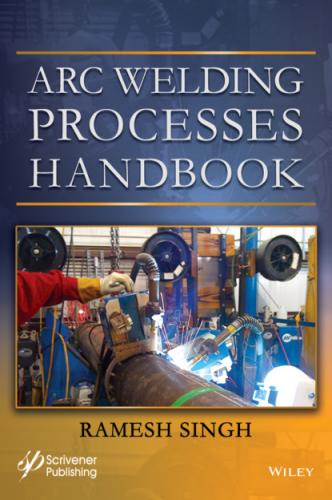*Processes discussed in this book.
**Included with GTAW process.
1.6.4 Gas Metal Arc Welding (GMAW)
In the desire to increase the production rate, and widen the types of material being welded by one process the GMAW process was invented. Since its early days the process has gone through a number of improvements, and currently it is one of the most versatile welding processes among the arc welding processes. It has number of variants by the way the weld metal is deposited, and shielding gases used for various types of metal welding.
1.6.5 Submerged Arc Welding (SAW)
Earlier attempt to increase welding production lead the development of Automatic welding utilizing bare electrode wires in the early nineteenth century, but was not much popular primarily due to the open arc and the resultant quality of weld, which was always an issue.
The dissatisfaction with bare-wire welding and some innovative ideas lead to the development of the submerged arc welding (SAW) process, this was much better automated process and it made the automatic welding popular. Submerged arc welding is defined as “an arc welding process which produces coalescence of metals by heating them with an arc or arcs between a bare metal electrode or electrodes and the work piece. Pressure is not used and filler metal is obtained from the electrode and sometimes from a supplementary welding rod.” It is normally limited to the flat or horizontal position.
1.7 Efficiency of Energy Use
Processes use electrical energy to initiate arc, but not all the arc energy is fully used to melt the metals being welded. There is significant energy loss in the process.
The process efficiency of various arc welding process differs significantly, based on number of factors like material being welded, type of gas being used if gas is used in the process. The effect of these variables depends on one or a combination of more factors.
The use of energy generated by a process is an important factor in determining how much current is needed to generate required heat for welding. The generation of heat also determines the effective use of a process for welding different materials. The table below gives the glimpses of Arc efficiency of various Arc Welding processes.
As is obvious, not all welding and joining process are equal, this leads to the fact that some are more versatile in usability for welding number of materials, while some are
